Ever found yourself staring at a toolbox, unsure which drill bit to pick?
Low-pressure DTH drill bits are best for shallower projects, operating at 7-10 bar, whereas high-pressure bits handle deeper, tougher jobs at 10-35 bar. The key is matching the bit to the material's depth and hardness.
Remember the time I tried fixing my bathroom sink and ended up calling a plumber because I used the wrong tool? Understanding the differences between low-pressure and high-pressure DTH drill bits feels a bit like that. Choosing the right bit isn't just about getting the job done—it's about efficiency, cost, and ensuring everything runs smoothly. In this blog, let’s explore how these factors come into play, whether you're digging into mining, construction, or any other project. Knowing which bit suits your needs can make all the difference in your project's success.
Low-pressure DTH bits operate at 7-10 bar.True
Low-pressure drill bits are designed to function effectively at 7-10 bar.
High-pressure DTH bits are suitable for shallow drilling.False
High-pressure bits are better suited for deeper, more challenging drilling.
What Are the Key Features of Low-Pressure DTH Drill Bits?
Ever found yourself knee-deep in a drilling project, wondering why some tools just click and others don't? Let's dive into what makes low-pressure DTH drill bits the unsung heroes in certain scenarios.
Low-pressure DTH drill bits work best at air pressures of 7 to 10 bar. They're ideal for shallower, softer rock formations, performing well with low-pressure hammers. Their design offers durability and adaptability, making them cost-effective for specific drilling needs.

Understanding Operating Pressure
I remember the first time I learned about the nuances of drilling pressure. It felt like unlocking a secret code to efficient drilling. Low-pressure DTH drill bits thrive in the sweet spot of 7 to 10 bar (100 to 145 psi). This range is perfect when you’re not going too deep and dealing with softer materials. Think of it as choosing the right tool for water well drilling1 or those small mining projects that don’t require the brute force of high-pressure equipment.
Design and Construction
When I first held a low-pressure DTH bit, I was impressed by its subtle strength. These bits might not be as hefty as their high-pressure cousins, but don't let that fool you. They're built for durability and versatility. The face design? It's all about efficiency with those button configurations that keep things running smoothly and debris-free. I’ve found that the flushing channels are like tiny highways for cooling and cleaning, ensuring everything stays on course.
| Feature | Low-Pressure DTH Bits |
|---|---|
| Operating Pressure | 7-10 bar |
| Applications | Shallow drilling, soft rocks |
| Design Focus | Durability, adaptability |
Hammer Compatibility
Ah, the harmony of a well-matched hammer and bit! It’s like pairing wine with cheese. These bits need to dance with low-pressure hammers to reach their full potential. Trust me, mismatched tools lead to a frustrating experience—inefficient drilling, premature wear, and headaches you'd rather avoid.
Applications and Suitability
If you’re tackling projects where less is more, these bits are your best friend. From water wells to geotechnical sampling2, they excel in scenarios that don’t need extreme penetration force. I’ve seen them shine in shallow mining operations where setting up quickly and working efficiently can make or break the day.
Performance and Efficiency
You might think, “Do I sacrifice speed?” Not necessarily. While they might not win a race against high-pressure bits, they offer reliable performance without guzzling energy. This efficiency translates to cost savings—a crucial factor when managing budgets without compromising on quality. Their tailored design makes them an economical choice for companies seeking steady performance without delving into deep penetration challenges.
Exploring these features, I've come to appreciate how low-pressure DTH drill bits fill a niche in the drilling world by offering a balance between operational effectiveness and economic efficiency. It's like having a trusty sidekick that's ready to tackle the job without breaking the bank.
Low-pressure DTH bits operate at 7 to 10 bar.True
Low-pressure DTH drill bits function optimally within the range of 7 to 10 bar.
High-pressure DTH bits are used for softer rocks.False
Low-pressure, not high-pressure, DTH bits are used for softer materials.
Why Choose High-Pressure DTH Drill Bits for Hard Rock Formations?
Ever faced the frustration of slow drilling in rock-hard formations? High-pressure DTH drill bits might just be your new best friend!
High-pressure DTH drill bits are the optimal choice for hard rock formations due to their exceptional durability, efficient energy transfer, and rapid penetration rates. Their robust design ensures superior performance, reducing downtime and increasing productivity in challenging environments.
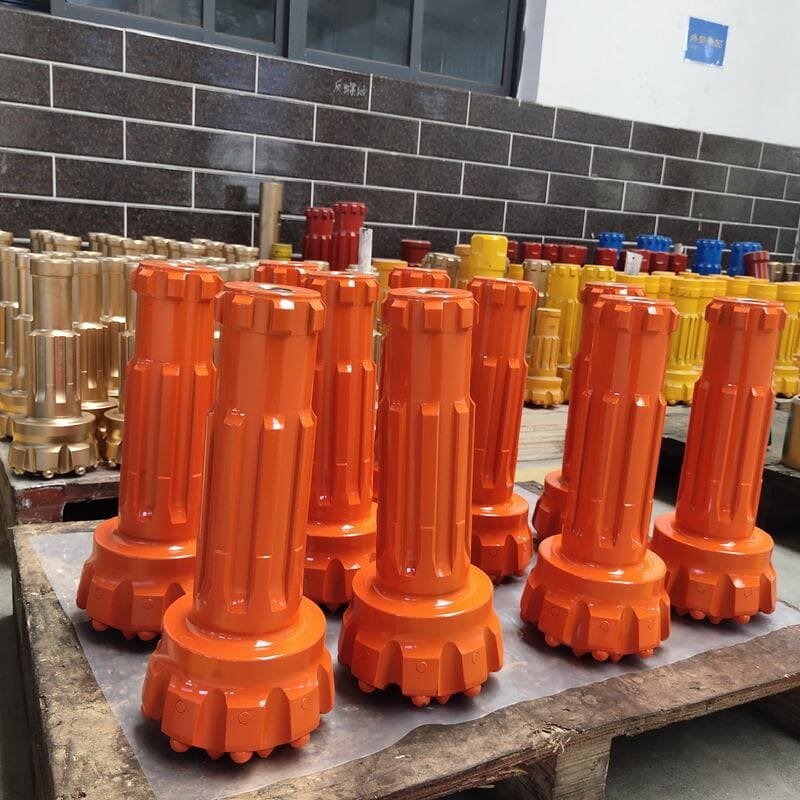
Understanding the Mechanics of High-Pressure DTH Drill Bits
I remember the first time I encountered the power of high-pressure Down-the-Hole (DTH) drill bits. It was like watching a maestro at work, as these bits tackled rock formations with an ease that seemed almost magical. Engineered to operate under air or fluid pressures ranging from 10 to 35 bar (145 to 508 psi), these drill bits deliver substantial energy right to the rock face, improving both penetration rates and drilling efficiency. They're built tough, using materials that laugh in the face of extreme forces.
Benefits Over Low-Pressure Alternatives
| Feature | High-Pressure DTH Bits | Low-Pressure DTH Bits |
|---|---|---|
| Operating Pressure | 10-35 bar | 7-10 bar |
| Application | Deep drilling in hard rock | Shallow drilling |
| Performance | Higher speed, efficiency | Slower, less efficient |
When you need to go deep and deal with hard, abrasive rocks, high-pressure bits are the way to go. Their aggressive face designs and button configurations truly enhance performance.
Optimal Applications and Industries
I've seen these bits shine across various industries—from mining to construction, and oil and gas too. In these fields, cutting through tough substrates quickly is paramount. The compatibility3 with high-pressure hammers ensures they deliver the necessary energy levels efficiently.
- Mining: They're indispensable in open-pit mining for cutting through dense ores.
- Construction: Ideal for foundational work involving stubborn bedrock.
- Oil and Gas: Perfect for exploratory drilling through challenging geological layers.
Cost Considerations: Investment vs. Returns
I'll admit, the higher upfront cost of high-pressure DTH drill bits gave me pause initially. But their durability and efficiency translate into lower operational costs over time. Faster drilling means reduced project timelines, which can lead to significant savings on labor and equipment rental costs. When evaluating their cost-effectiveness, it's essential to weigh these long-term benefits against the initial expense.
If you're interested in further insights on optimizing drilling equipment investments, it might be worth looking into cost analysis strategies4.
High-pressure DTH drill bits operate at 10-35 bar.True
High-pressure DTH drill bits are engineered to function within this pressure range.
Low-pressure DTH bits are more efficient in hard rock.False
Low-pressure bits are less efficient than high-pressure ones in hard rock.
How does bit design influence drilling efficiency?
Ever found yourself marveling at how some drill bits seem to glide through rock effortlessly? The magic often lies in the design. Let me take you through how bit design can redefine your drilling efficiency.
Bit design significantly influences drilling efficiency by optimizing cutting action, enhancing debris removal, and minimizing wear. Specific designs are tailored to various geological conditions, boosting penetration rates and overall performance.
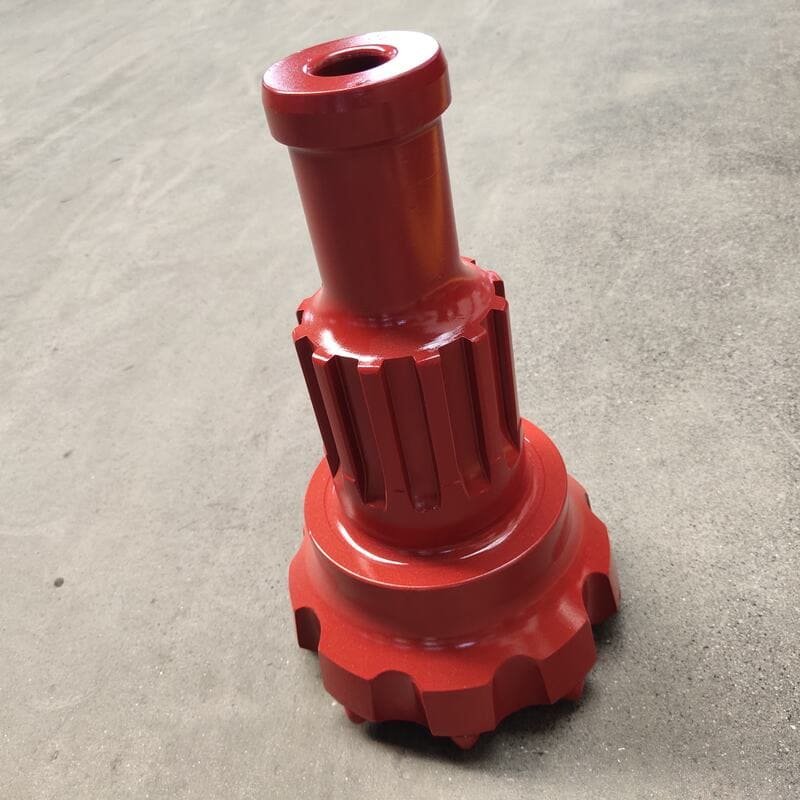
The Role of Cutting Structures
When I first started working with drilling equipment, I quickly realized that not all bits are created equal. The cutting structure is like the unsung hero of drilling. Imagine bits with finely-tuned cutting edges and button configurations5 that maximize contact with the rock surface. These are the bits that make you feel like you're on a drilling speedway, cruising through rock with minimal resistance.
-
Aggressive Designs: I've seen bits with sharp, aggressive cutting structures outperform in soft to medium formations. They slice through these like a knife through butter, providing a high rate of penetration (ROP) thanks to their larger contact area.
-
Durable Designs: On the flip side, when tackling hard rock, I’ve relied on robust designs with reinforced buttons. It's like having a bit that's more about endurance than speed, focusing on durability and longevity.
Flushing Channels and Debris Removal
One of my early mentors once said, "Drilling is as much about removing as it is about penetrating." This rings true when it comes to effective debris removal. Drill bits with deeper, wider flushing channels can efficiently transport cuttings away from the drill face, reducing clogging and overheating—two big culprits of downtime.
| Feature | Impact on Drilling |
|---|---|
| Deep Channels | Improved debris flow, preventing regrinding and heat buildup |
| Narrow Channels | Better suited for controlled environments with less debris |
Tailoring Bit Design to Geological Conditions
Every time I face a new geological challenge, I’m reminded of the importance of matching bit design to geological conditions. For instance, high-pressure DTH bits are my go-to for hard rock due to their ability to withstand high stress, while low-pressure bits excel in softer formations.
- Rock Hardness: It’s fascinating how matching the bit's material and design to rock hardness can dramatically enhance penetration rates6.
- Formation Type: Tailoring bits to formation types—whether abrasive or fractured—ensures efficiency and reduces strain on equipment.
Bit Material and Wear Resistance
I can’t emphasize enough how the material of a drill bit affects its wear resistance and lifespan. Tungsten carbide inserts are like the superheroes in high-performance bits, offering exceptional hardness and longevity.
| Material | Benefits |
|---|---|
| Tungsten Carbide | High hardness, excellent wear resistance |
| Steel | Cost-effective, good for softer formations |
Understanding these aspects of bit design has been crucial for me in selecting the right tools for specific drilling needs. It's like having a secret weapon for improving operational efficiency and reducing costs. For more insights into bit selection and performance, I often check out resources on drill bit optimization7.
Aggressive bit designs are best for hard rock formations.False
Aggressive designs are suitable for soft to medium formations, not hard rock.
Tungsten carbide offers superior wear resistance in drill bits.True
Tungsten carbide is known for high hardness and excellent wear resistance.
Which DTH Bit Should I Use for My Drilling Project?
Ever wondered why some drilling bits just don't make the cut in certain jobs?
For optimal drilling, low-pressure DTH bits excel in shallow projects like water wells, while high-pressure DTH bits are best for deep, hard rock drilling in industries like mining and oil exploration.
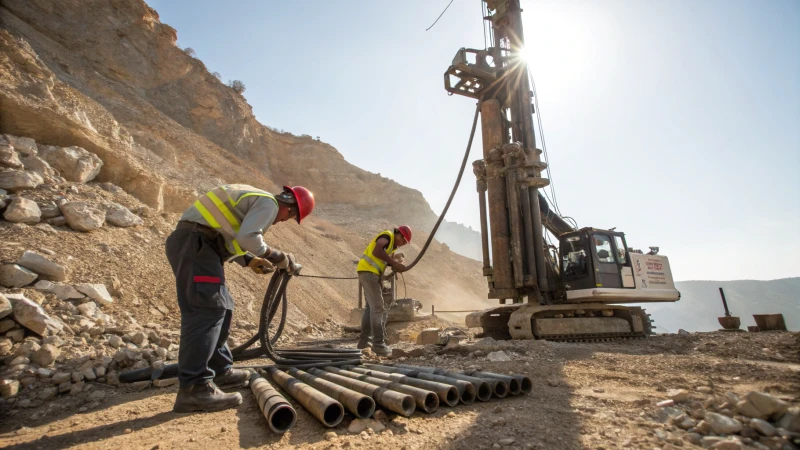
Low-Pressure DTH Bits
You know those times when you're tackling a project, and it feels like the equipment is just right for the job? That's how I feel about low-pressure DTH bits when I'm working on something like water well drilling8. They operate efficiently at air pressures ranging from 7 to 10 bar (100 to 145 psi), making them a go-to for shallower applications. Plus, their cost-effectiveness can't be beaten, especially if you're dealing with less abrasive geological conditions.
| Application | Benefits |
|---|---|
| Water Well Drilling | Cost-effective, shallow depth |
| Quarrying | Efficient in softer rocks |
High-Pressure DTH Bits
Now, for those times when you need a bit that can handle the pressure—literally. High-pressure DTH bits are what you want when you're diving into deep, tough formations. Operating between 10 and 35 bar (145 to 508 psi), these bits have been my savior in challenging industries like mining9 and oil exploration. Their robust construction and aggressive face designs mean they're ready to face any tough situation head-on.
| Application | Advantages |
|---|---|
| Hard Rock Mining | Increased durability, deep penetration |
| Oil and Gas Drilling | High efficiency in tough formations |
Matching DTH Bits with Hammers
Remember, it's not just about the bit—it's about the whole team. Ensuring your DTH bits match the right hammers is crucial for getting the job done right. Pair low-pressure bits with low-pressure hammers and high-pressure bits with high-pressure hammers. Trust me; this compatibility can make all the difference in enhancing drilling efficiency.
Material Hardness Considerations
And let's not forget about the material you're drilling into. High-pressure DTH bits are your best bet for harder, more abrasive formations. Their design improves debris removal10 and cooling efficiency, making them perfect for those moments when maintaining bit integrity is crucial.
By understanding these applications and considerations, you can select the right type of DTH bit to ensure your project's success. Evaluate factors like depth, material hardness, and compatibility to guide your decisions and optimize your operations.
Low-pressure DTH bits are ideal for shallow applications.True
Low-pressure DTH bits are used in water well drilling and small mining.
High-pressure DTH bits are not suitable for oil drilling.False
High-pressure DTH bits excel in oil and gas exploration due to durability.
How Do Cost Factors Vary Between Low and High-Pressure DTH Bits?
Ever find yourself puzzling over the real cost differences between low and high-pressure DTH bits? You’re not alone. Understanding these variations can save you headaches and dollars in the long run.
Low-pressure DTH bits are cheaper initially but can lead to higher operational costs in tough conditions. High-pressure bits, though more costly upfront, deliver better efficiency and longevity, reducing expenses over time in hard rock drilling.
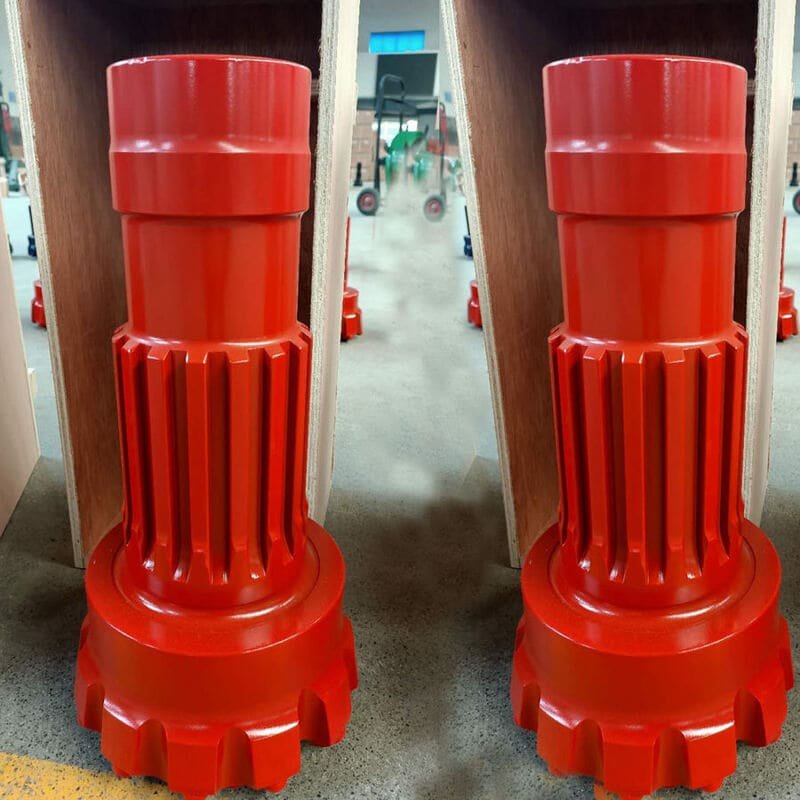
Initial Purchase Costs
Let me take you back to a time when I was grappling with the decision to choose between low and high-pressure DTH bits. Imagine standing in a bustling equipment yard, weighing the upfront costs.
| Bit Type | Average Cost Range |
|---|---|
| Low-Pressure Bits | $500 - $1,500 |
| High-Pressure Bits | $1,500 - $3,500 |
Low-pressure bits beckoned with their enticing price tags—between $500 to $1,500. High-pressure bits, on the other hand, stood firm at $1,500 to $3,500, boasting of their robust build.
Operational Costs and Efficiency
Back then, I didn’t realize how operational environments could flip those initial costs on their heads. In challenging terrains, I found myself replacing low-pressure bits more often than I’d like, leading to unforeseen expenses and downtime. High-pressure bits, despite their hefty price tag, proved their worth with durability and efficiency that sliced through tough rock like butter.
The cost-benefit analysis11 I conducted became a turning point in optimizing project expenses.
Performance Longevity
Performance longevity was another eye-opener. High-pressure bits are crafted from enhanced materials with engineering precision and outlasted their low-pressure counterparts by far in demanding conditions. It was like having a reliable workhorse that just kept going.
Technical Specifications
Each bit is uniquely designed for its pressure category:
- Low-Pressure Bits: Best for softer soils and less demanding projects.
- High-Pressure Bits: Built for deep dives into tougher terrains.
Maintenance and Compatibility
Reflecting on maintenance needs, I realized how the choice between these bits impacts everything from maintenance schedules to equipment compatibility. High-pressure bits demand high-pressure hammers—an investment in itself but one that pays off in performance.
Maintenance became more about regular checks to ensure everything ran smoothly—no more surprises from unanticipated wear and tear.
Understanding these factors has been crucial in aligning my equipment choices with operational goals and financial constraints—a lesson learned through experience and some trial and error.
Low-pressure DTH bits are cheaper to purchase initially.True
Low-pressure bits cost $500-$1,500, while high-pressure ones are $1,500-$3,500.
High-pressure DTH bits have shorter lifespans than low-pressure ones.False
High-pressure bits last longer due to enhanced materials and engineering.
How Do You Choose the Right Hammer for Your DTH Drill Bit?
Ever felt overwhelmed by the choices when picking the right hammer for your DTH drill bit? You're not alone!
To match a DTH drill bit with the right hammer, consider the pressure rating: low-pressure bits work best with low-pressure hammers, while high-pressure bits require high-pressure hammers. This pairing ensures optimal drilling performance and durability.
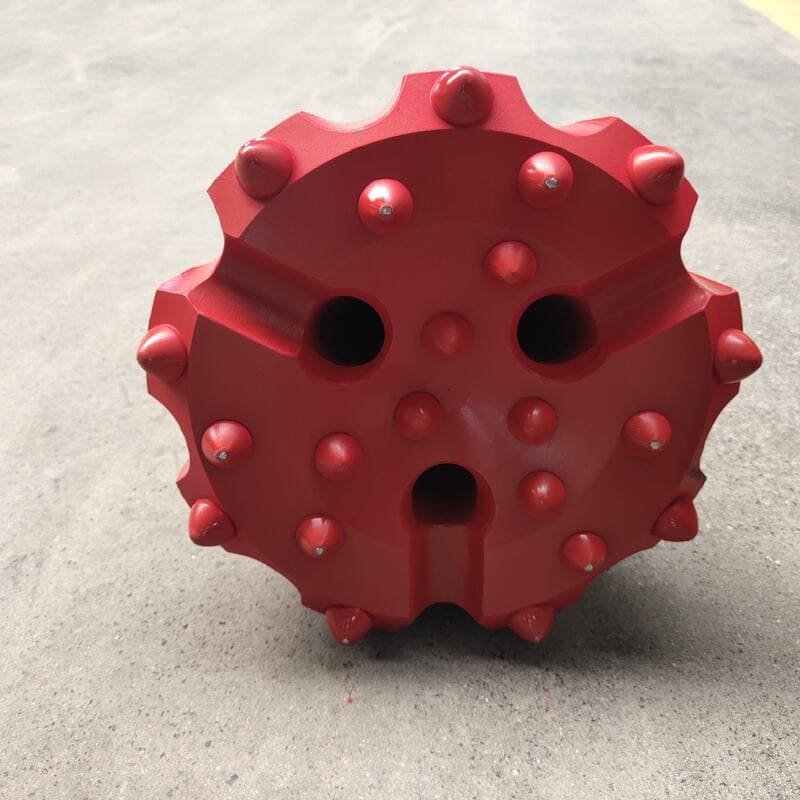
Understanding Hammer Compatibility
I remember the first time I faced this dilemma: standing in front of rows of hammers, each boasting different specifications. My mind was spinning, much like a drill bit itself, trying to figure out which one would make my DTH drill bit sing. The secret lies in understanding your bit's pressure needs12. For instance, when I tackled a water well project, my low-pressure DTH drill bit seamlessly paired with a low-pressure hammer, operating efficiently between 7 to 10 bar.
But when I embarked on a deep rock formation challenge, I knew it was time for a high-pressure setup. These high-pressure hammers, roaring between 10 to 35 bar, were my companions in conquering the toughest materials.
Hammer and Bit Specifications
Here's where I learned to rely on the manufacturer's guidance. It's like having a roadmap for your journey—ensuring that the hammer's pressure rating matches your DTH bit is crucial. And then there's the shank type and dimensions to consider, which felt like fitting puzzle pieces together. Ensuring these align with your setup can save countless headaches down the line.
- Pressure Rating: Ensure the hammer matches the pressure specifications of the DTH bit.
- Shank Type: Confirm the hammer's shank type aligns with your drill bit's shank.
- Weight and Dimensions: Verify that the hammer's weight and size are suitable for your drilling setup.
| Hammer Type | Pressure Rating | Applications |
|---|---|---|
| Low-Pressure | 7-10 bar | Shallow Drilling |
| High-Pressure | 10-35 bar | Deep Drilling |
Exploring Industry Insights
Over the years, I've found that consulting industry experts is like getting insider tips from seasoned travelers. These insights are invaluable, helping me stay ahead of the curve with the latest hammer technologies. Whether through technical insights13 or case studies, this knowledge empowers me to make informed decisions. So now, when I select or maintain my drilling gear, I do so with confidence, knowing I've got the best tools for the job.
Low-pressure hammers operate efficiently at 10 to 35 bar.False
Low-pressure hammers operate efficiently between 7 to 10 bar.
High-pressure hammers are suitable for deep drilling.True
High-pressure hammers deliver power needed for drilling through tough materials.
Conclusion
Low-pressure DTH drill bits are ideal for shallow drilling at 7-10 bar, while high-pressure bits excel in deep, hard rock applications at 10-35 bar, enhancing efficiency and performance.
-
Understanding water well drilling helps determine the relevance of low-pressure DTH drill bits in creating sustainable water sources. ↩
-
Learn how geotechnical sampling aids in construction and mining projects, highlighting why low-pressure DTH bits are essential. ↩
-
Learn about the importance of matching high-pressure DTH drill bits with compatible hammers for optimal performance. ↩
-
Explore strategies for evaluating the cost-effectiveness of investing in high-pressure DTH drill bits. ↩
-
Discover how different button configurations enhance drilling efficiency. ↩
-
Explore how matching bit design to rock hardness boosts penetration rates. ↩
-
Learn expert strategies for selecting the right drill bit for optimal performance. ↩
-
Explore how low-pressure DTH bits enhance efficiency and cost-effectiveness in water well drilling. ↩
-
Discover why high-pressure DTH bits are essential for mining applications, focusing on durability and deep penetration. ↩
-
Learn about debris removal techniques that improve the cooling efficiency of DTH drill bits in challenging conditions. ↩
-
Explore detailed studies comparing the long-term financial impact of using different pressure-rated DTH bits. ↩
-
This link provides insights on pairing low-pressure DTH drill bits with compatible hammers for optimized performance. ↩
-
Explore this resource to understand which hammers work best with high-pressure DTH drill bits in challenging environments. ↩








